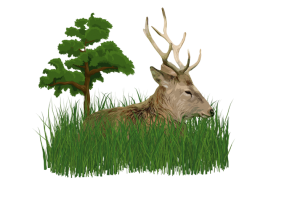EUROPEAN DEER SPECIES
There are around 45 deer species (Cervidae) worldwide. Many of them live in Asia, North and South America, but only six are native to Europe.
Their distinguishing feature: the antlers!
Unlike horns of cows or goats, the antlers are shed and re-formed every year! It’s made of bone and is fully grown in just a few months.
Elk
Elks are the largest deer species in the world! Elks often give birth to twins.
Distribution: Northern Europe, Northern Asia, North America
Social organization: solitary animals
Body length: up to 300 cm
Shoulder height: up to 210 cm
Weight: up to 600 kg
The antlers of the bull elk are shovel shaped. While the antlers of European elks are smaller, antlers of North American elks can have a span of up to 2 meters.
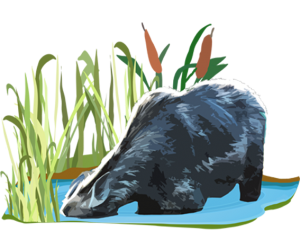
Reindeer
Reindeer can walk through snow without any problems. With their special hooves they don’t sink in the deep snow! The hooves have an elastic skin in between and can be spread apart!
Distribution: Northern Europe, Northern Asia, North America
Social organization: large herds
Body length: up to 210 cm
Shoulder height: up to 135 cm
Weight: up to 240 kg
The antlers are asymmetrical and branched. The antlers of the males can reach up to 1.3 meters and weigh up to 15 kg.
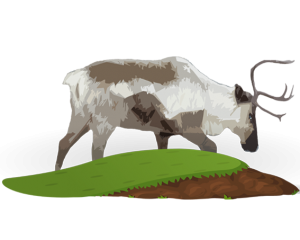
Red deer
The red deer’s name originates from their distinguished reddish-brown summer fur. In winter, however, they are a greyish brown colour.
Distribution: Europe, North America, Northwest Africa, North Asia
Social organization: Females and young animals live in herds, males are mostly solitary animals
Body length: up to 205 cm
Shoulder height: up to 130 cm
Weight: up to 220 kg
The antlers look different from individual to individual. The older the stag, the more branches it has. It can weigh up to 15 kg.
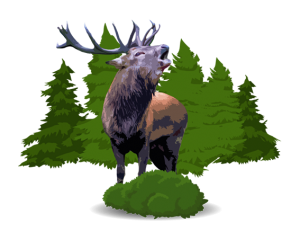
Fallow deer
Fallow deer are very social animals and communicate through vocalization, posture and olfaction.
Distribution: Europe, Asia Minor
Social organization: flexible, females live in herds, males are mostly solitary
Body length: up to 155 cm
Shoulder height: up to 95 cm
Weight: up to 80 kg
Adult stags have shovel-shaped antlers. On average, the antlers are 55 cm long and weigh about 2 kg.
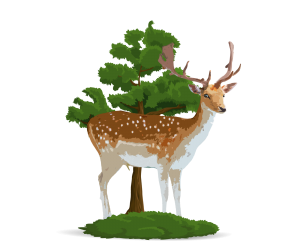
Sika deer
The sika deer is from East Asia. In Japanese “shika” means deer.
Distribution: East Asia, Europe
Social organization: Females and young animals live in herds, males are mostly solitary
Body length: up to 190 cm
Shoulder height: up to 115 cm
Weight: up to 140 kg
In rare cases, the antlers of Sika deer can have up to ten ends.
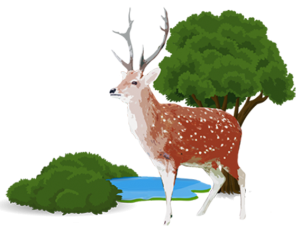
Roe deer
Although the mating season of roe deer is in summer, the doe’s fertilized egg does not develop further until December. Therefore the fawns are born between May and June.
Distribution: Europe, Asia
Social organization: live individually or in matriarchal groups
Body length: up to 127 cm
Shoulder height: up to 84 cm
Weight: up to 30 kg
The antlers are 15-20 cm long and have up to 3 ends. At the base of the antlers there are scent glands, which roebucks use to mark their territory.

Interesting facts
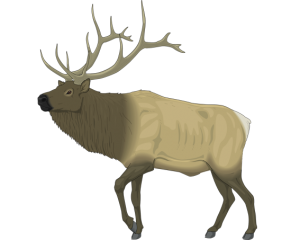
The antlers of the North American wapiti grows 2 cm per day.
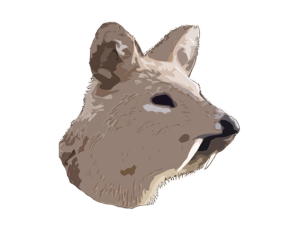
Chinese water deer is the only deer species that has long canine teeth instead of antlers.
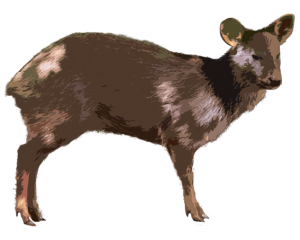
The smallest deer is just 25-40 cm tall! It is the Northern Pudu who lives in South America.
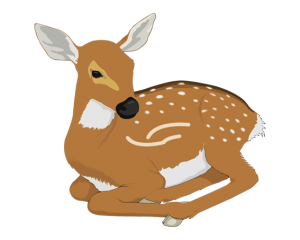
The offspring of all deer species take their first steps 30 minutes after birth.
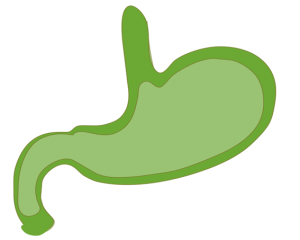
Deer are ruminants and their multi-chambered stomach is perfectly adapted to the digestion of plant-based food.

400,000 years ago there was deer with an antler span of up to 3.6 meters.

